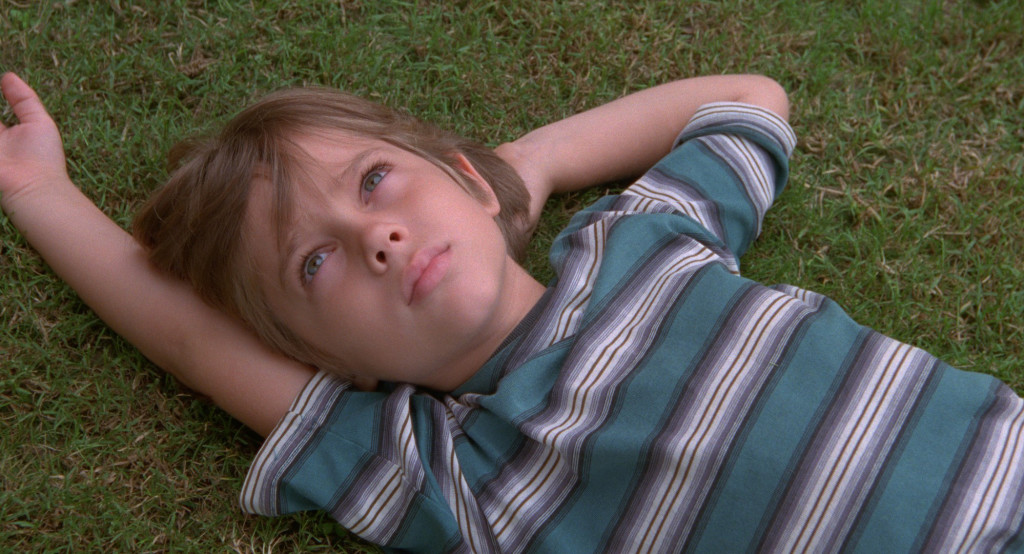 2015 is going to be one hell of a year for movies. From new entries in some of the biggest franchises in the world–Star Wars, The Avengers, The Terminator, Jurassic Park, Mad Max, The Hunger Games, Mission: Impossible, James Bond–to not one but two Pixar movies, to new films by Quentin Tarantino, Terrence Malick, Guillermo Del Toro, Brad Bird and Ridley Scott, to Fifty Shades of Grey, the hype is unbelievable. All I can say is it’s going to be a long year of heated Internet debates and disappointed expectations, so buckle in.
2015 is going to be one hell of a year for movies. From new entries in some of the biggest franchises in the world–Star Wars, The Avengers, The Terminator, Jurassic Park, Mad Max, The Hunger Games, Mission: Impossible, James Bond–to not one but two Pixar movies, to new films by Quentin Tarantino, Terrence Malick, Guillermo Del Toro, Brad Bird and Ridley Scott, to Fifty Shades of Grey, the hype is unbelievable. All I can say is it’s going to be a long year of heated Internet debates and disappointed expectations, so buckle in.
But first, we must lay 2014 to rest.
2014, as a year in movies, for me produced more interesting news stories than truly interesting films. The hype and drama surrounding projects like Interstellar, Unbroken, and The Interview were significantly more interesting than the movies themselves. But, as always, the gems were there, and they were aplenty. Here I list my top ten movies of the year, my personal Oscar ballot (if only), and the ratings and rankings of the ninety-six 2014 movies I saw last year.
As always, I preface this with a hearty “from what I’ve seen so far.”
There were many movies it pained me to leave off this list, but alas. Just missing the cut are Alejandro G. Inñaritú’s technical wonder Birdman, Steven Knight’s one-man movie Locke starring Tom Hardy, the Dardenne Brothers’ social parable Two Days, One Night, Paul Thomas Anderson’s groovy existential noir Inherent Vice, and JC Chandor’s super great, surprisingly not-that-violent A Most Violent Year. Pour five out.
And here we go!
***
TOP TEN
10. Citizenfour
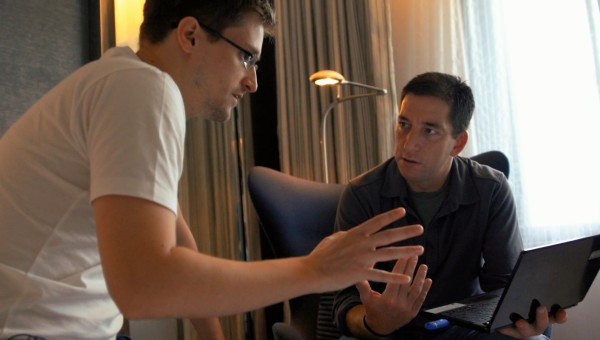
Paced with the speed and urgency of a top-notch political thriller and filmed with the intimacy of a John Cassavetes drama, Pulitzer Prize-winning journalist and filmmaker Laura Poitras’s documentary exposé Citizenfour is perhaps the most important and current movie of the year. Before the world had heard the name Edward Snowden, Poitras knew him as “Citizenfour,” the anonymous whistleblower corresponding with her via encrypted email. Little did she know, she and two fellow reporters were about to be invited by Citizenfour to change the world from a tiny hotel room in Hong Kong. When the film isn’t giving us context for Snowden’s actions, it largely plays out in the actual, unbroken conversations between Snowden and reporter Glenn Greenwald in the claustrophobic hotel room. And while most of these conversations are about the imminent leak and the complicated moral debate surrounding it, Poitras is less concerned with the intimate details of the information Snowden is feeding to them, focusing rather on something more candid–how Snowden exists in space. A surprising amount of the film is the mundane actions of Snowden’s day–getting dressed, shaving, gelling down his hair, corresponding with his girlfriend via email. And as history slowly plays out through news reports and belligerent paparazzi, we get Snowden’s reactions in rich close-up–the anticipation, the anger, even the sadness at the circumstances. Poitras humanizes Snowden by simply letting him be, and by the chilling, enigmatic end of the film, the audience realizes they are just as implicit in the fight to come as Snowden was. Bar none the scariest movie of the year, Citizenfour is required viewing for anyone hoping to understand the necessity of action in our modern world.
09. Guardians of the Galaxy
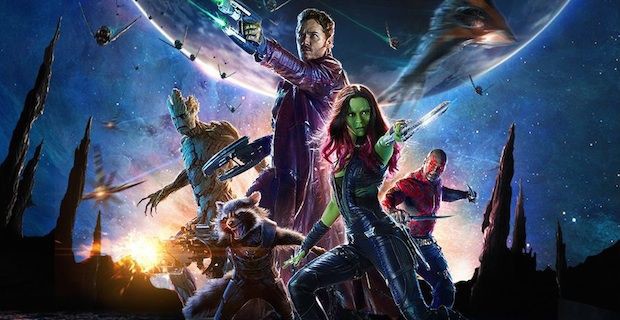
I don’t think many people expected this movie to work. A cast of characters no one but die-hard comics fans had heard of, a mythology that promised only to complicate the already super-complicated Marvel Cinematic Universe, a director whose most famous movie was one where Nathan Fillion fights parasitic extraterrestrial worms, and a lead known for his strictly comedic work in a Thursday night sitcom and also a couple scenes in Her. But director James Gunn, Chris Pratt, and their merry band of outsiders pulled off what has to be the most exciting, entertaining, joy-inducing film of the year. Less successful when it tries to tie itself to the rest of Marvel’s universe, but wholly successful as a standalone story, Guardians of the Galaxy works because it knows what so many other blockbusters this year disregarded–we will stay with characters through whatever plot twists and stumbles are thrown at us if we like them. Some of the most memorable scenes in Guardians of the Galaxy are our heroes sitting in a room and talking, which is astonishing for a movie of this kind. It certainly helps that the film is an aesthetic treat, thriving on bursting colors, inventive designs, and a soundtrack that is the only thing I listen to when studying. Vivid, unforgettable characters, thrilling set-pieces, and great performances on-screen and off, Guardians of the Galaxy is Marvel’s best film to date and the best time I had at the movies all year.
08. Only Lovers Left Alive

Director Jim Jarmusch has built a thirty-plus-year career out of playing everything in his movies completely deadpan, and after all the sensationalism built up around the vampire genre, it turns out deadpan is just what it needed. Only Lovers Left Alive stars Tom Hiddleston and Tilda Swinton as Adam and Eve, a couple who have been together for centuries–because they’re, you know, vampires–who reunite after Adam, a reclusive musician, becomes depressed and fed up with the direction human society is heading. However, their reunion is quickly sullied by the arrival of Eve’s sister Ava (Mia Wasikowska) and their rapidly diminishing supply of blood. In typical Jarmusch fashion, the tone is at once dour, quirky, and meandering, but his dry sense of humor is infectious, and the film also somehow manages to be the most deeply romantic of the year, in every sense of the word. Hiddleston and Swinton’s chemistry is palpable, implying the enduring, moving connection bound through the centuries. But, in addition, the film is just as much about the Romantic appreciation of art and culture of the past and how far the modern world has moved from that, told through the eyes of those who lived through it all. And it’s through this weary tone, this deadpan interaction of the romantic and the Romantic, that Jarmusch can play effectively with genre tropes. The word “vampire” is not said once. Literally sucking people’s blood for sustenance is considered “low.” One of the characters is actually Christopher Marlowe. That Christopher Marlowe. This movie has the balls to make Christopher Marlowe a vampire. And it’s fantastic.
07. Whiplash
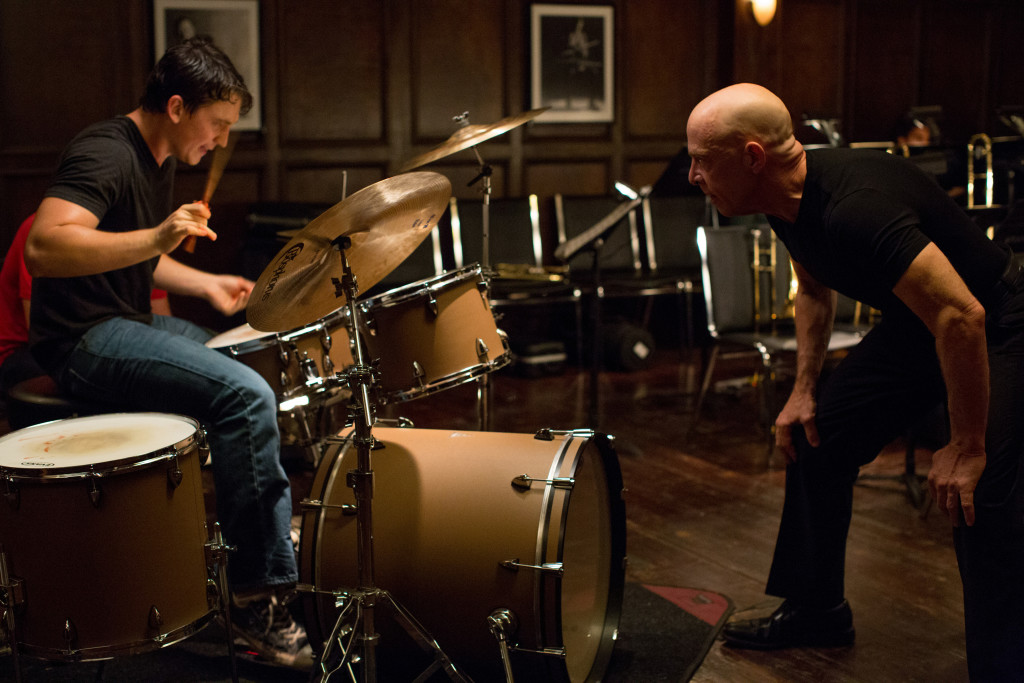
The pursuit of perfection has rarely been portrayed as viscerally and creatively as it is in Whiplash, the film that won the Grand Jury Prize at Sundance this past year. Anchored by two jaw-droppingly good performances from Miles Teller and especially JK Simmons, the star of the show is the man behind the camera, 29-year-old Harvard graduate Damien Chazelle. A thriller set in the world of jazz drumming, focusing on the emotionally and physically abusive relationship between a student (Teller) and his conductor (Simmons, who is absolutely ferocious in the role), Chazelle brilliantly finds ways to keep upping the stakes. Clearly one with a keen ear for music, Chazelle’s constantly moving camera captures and exploits the simultaneous exhilaration and brutality of musical performance, making even the seemingly smallest moments–playing a double-time swing, for example–a life-or-death situation. This all culminates in the most thrilling climax of the year, a cacophony of jazz, stress, pain and dynamic movement that left me pinned to my seat for minutes after the credits started rolling. Whiplash is about a lot of things–the experience of performance, the desire to be the best, the uncertainty of youth, the morality of Simmons’ character’s actions–but more than anything else it announces Chazelle as the real deal, and a filmmaker to look out for in the future.
06. Selma
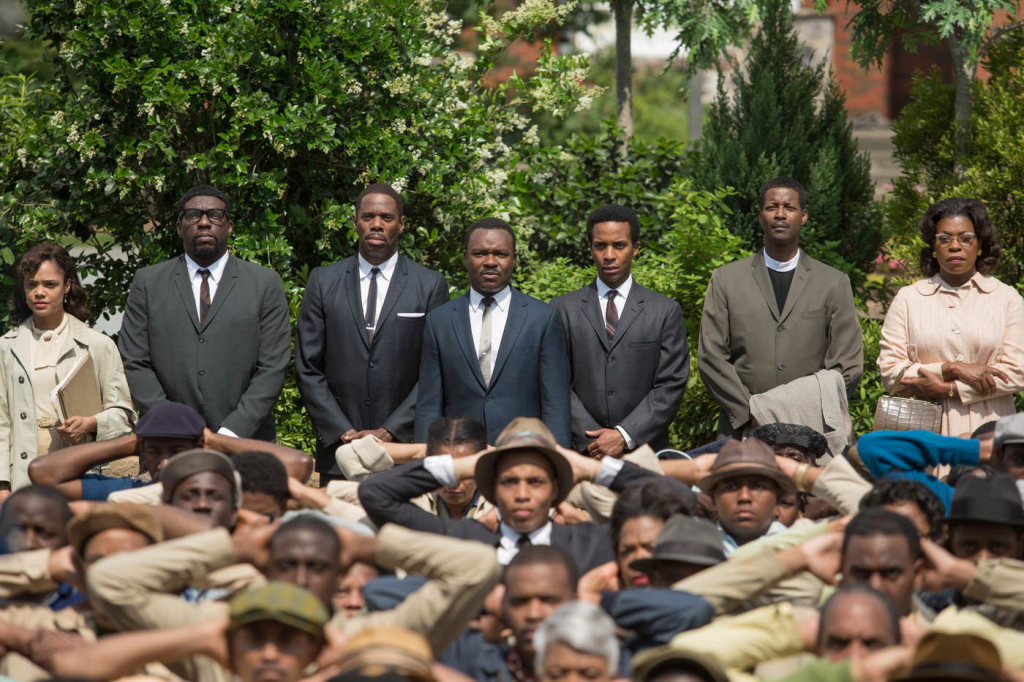
Ava DuVernay’s vivid, rousing portrait of Martin Luther King, Jr. during three critical months of his life is incredible for so many reasons. Many biographical movies cover their subjects from birth to death, and end up playing like the greatest hits of that person’s life, rather than accurately portraying who that person was. Selma, with a narrow focus and a fascinating subject, sidesteps that trap and presents a fully-formed, beautifully three-dimensional portrait of King, a man whose public and private personas clashed at every turn. Perfectly embodying King is David Oyelowo, a rising British actor who audiences will recognize as the principal in Interstellar who for some reason doesn’t think engineers can help solve the world’s problems. But Oyelowo is phenomenal as King–unshakable and stirring in his public speeches, weary and vulnerable in his private affairs. This rendition of King is timeless because he feels real, and DuVernay explicitly brings King’s teachings into the modern day. Through simple, proscenium stagings and minimal unmotivated camera movements, Selma, Alabama and Doctor King’s marches through it feel as present and genuine as anything broadcast on television from Ferguson in 2014. Which is important, because Selma is about a lot more than just race relations. It’s about a question that King vocalizes during a crucial scene in a jail cell: “What happens when a man stands up, says enough is enough?” That question epitomizes the journey all the characters in Selma undertake, and it’s a question that remains vitally important fifty years later.
05. Life Itself
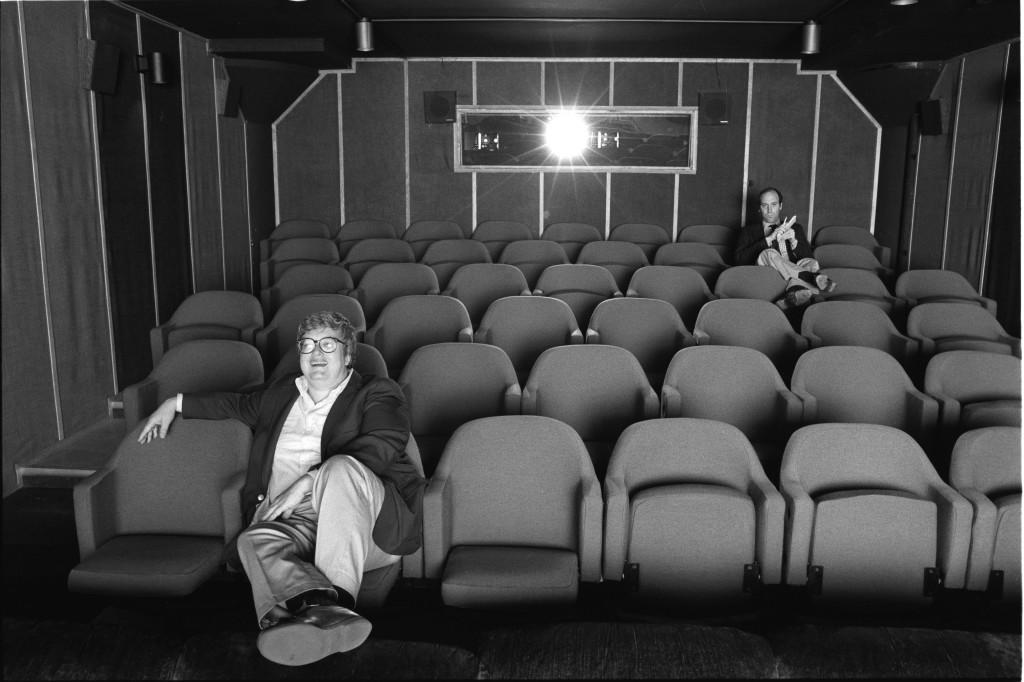
In 1994, film critic Roger Ebert championed a three-hour long documentary at the Sundance Film Festival called Hoop Dreams, a movie that ended up launching the career of its director, Steve James. Twenty years later, James brought his latest documentary to Sundance 2014, a film about the life of that champion, Roger Ebert. In the months leading up to his death in April of 2013, Ebert encouraged James to film him and chronicle his life, and the result, Life Itself, is an immensely moving, deeply personal, and flat-out beautiful piece of filmmaking. Ebert, who halfway through filming received the diagnosis that the cancer that had already claimed his lower jaw was now fatal, is as deeply committed to showing the truth of his life and situation as James is. Many scenes in the hospital with Ebert are uncomfortably long, showing the detailed and often graphic process of how he eats and drinks and has his throat suctioned and goes through grueling physical therapy. Meanwhile, through montages of archival material inspired by Ebert’s own memoirs, as well as interviews with everyone from Ebert’s former drinking buddies to the filmmakers he loved, James shines light on both the great successes and great struggles of the man’s life. A Pulitzer-Prize winning film critic by 1975 and a regular member in Alcoholics Anonymous by 1979, Ebert is portrayed as a complicated man, a person of the people, with pleasures and emotions almost as grand as his intelligence. James edits together footage of the films Ebert loved with the reviews he wrote about them, to illustrate how it was both this personability and this passionate, encyclopedic knowledge that quickly made him the most famous film critic in the country. But it also dives into his alcoholism, his temper problems (scenes of him and Gene Siskel at each other’s throats are especially provoking), and eventually his cancer, which seems to be not a sign of defeat for Ebert but a call to action. Through all of this, he watches movies and writes about them and watches and writes–never more so than in his final year, determined to leave behind as hefty a legacy as possible. James captures all of this in startling, warm, beautiful clarity. But in the end, Life Itself isn’t really about a man who loved movies–what it’s about is right there in the title: life, and how Ebert navigated its complicated, messy web with passion, love, and truth.
04. The Lego Movie (full review)
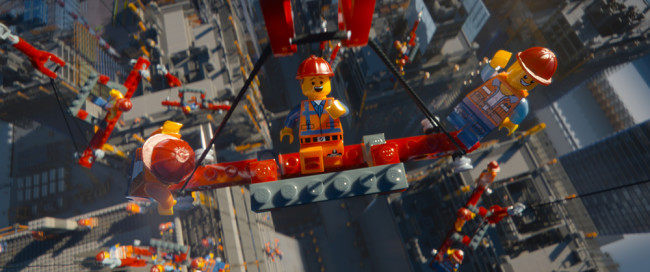
Full disclosure: watching The Lego Movie, it sometimes felt like it was made for me. My years-long obsession with Legos as a child. My penchant for meta-humor and meta-narrative. It even has the Batman I never knew I wanted.
I am reasonably certain this movie started out as Warner Brothers wanting to make some easy money on a property they had lying around. And if Battleship taught us anything, it’s that being too cagey about those intentions only makes the movie itself more transparent, and the audience ends up distanced rather than engaged. (Who took “the Battleship movie” seriously?) However, under the steady, clever, endlessly creative hands of Phil Lord and Christopher Miller (directors of Cloudy With a Chance of Meatballs, 21 Jump Street, and 22 Jump Street), The Lego Movie leans into the pitch and lets the audience in on the joke, crafting a story that’s about as anti-Big Business as they come, while simultaneously focusing enough on the cast of toys to increase the studio’s profit with ancillary product sales. But even in that regard, Lord and Miller defy expectations. The Lego Movie is actually a bit of a misleading title, as the film is just as much about the humans who love Legos as it is about the Legos themselves. And through the frenetic pacing and self-referential story, The Lego Movie ends up distinctly capturing the human experience of play–the joyous, infinite space for creation which is what these toys were invented for. For its gleeful subversiveness, for its beautiful animation, for its expert storytelling–for all of these reasons and more, I hold The Lego Movie near and dear to my heart.
03. Nightcrawler
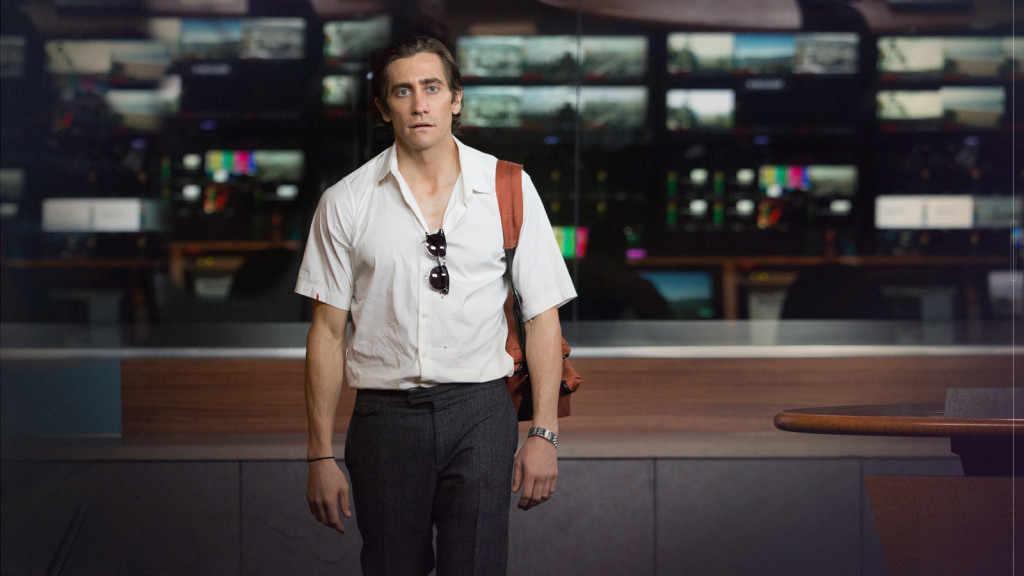
In a year of spectacular performances, few if any top Jake Gyllenhaal as Lou Bloom in Nightcrawler. A child of the Internet and the school of thought that “drive plus determination equals success, period,” Lou is a terrifyingly realistic, viciously wild, incredibly smart creation, and Gyllenhaal, one of the most exciting actors of his age group, is astonishing in the role. In an example of total erasure of self, Gyllenhaal changes everything from his physicality to his voice, tapping into the desperate and the motivated, the intelligent and the feral. He harks back to the anti-heroes of the Golden Age of American film–Travis Bickle, Michael Corleone, main characters we don’t necessarily like but we can’t look away from. Backing him up is the machine gun of a screenplay, written by Dan Gilroy, who also made his directorial debut on the film. Nightcrawler introduces us to the world of freelance video journalism–Lou finds himself surprisingly adept at capturing lurid, graphic footage at crime scenes and promptly selling it to local news stations, a skill no doubt connected to the fact he’s a detached sociopath. But as his success grows and his actions become more and more morally dubious, his story slowly reveals the dark heart of American news: people just want to see a good shot, no matter what. Lou takes it upon himself to make sure that want is fulfilled. This is a pitch-black satire, a full-pressure thriller, an enigmatic character study, and an incredibly disturbing morality play. Led by Gyllenhaal’s unfalteringly dynamic performance, it hits every one of these tropes with gusto. Nightcrawler is exhilarating old-school filmmaking, a film of rare form, and I hope its success ushers in more films of its kind. I can only hope they’re as good as Gilroy’s film is.
02. The One I Love
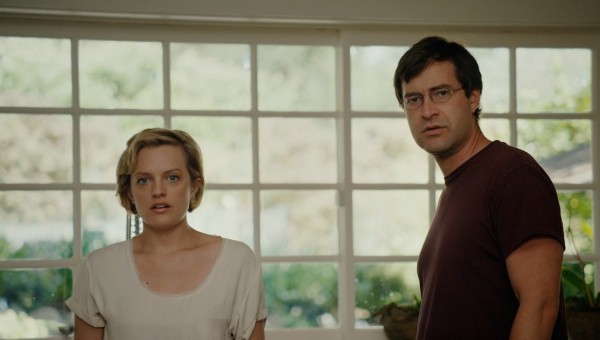
I’ve recommended The One I Love to almost everyone I know, as it’s one of the most woefully underseen movies of the year. But when I do, I inevitably get asked: “So, what’s it about?” And therein lies the problem. Because while literally the film’s about a couple that goes on a weekend retreat to save their marriage, that’s about the first ten minutes of the movie and describing anything else about the plot is basically a spoiler. Directed by first-timer Charlie McDowell, this is a twisty, Twilight Zone-esque labyrinth of a film that is confounding and mysterious until it isn’t, and that is actually better the less you know about it going in. So I’ll tread lightly.
Starring Mark Duplass and Elisabeth Moss–and for the most part, only them–in exemplary performances that allow each actor to show off every bit of their range, this movie represents the best of what low-budget cinema can do. Admittedly, McDowell had a leg up, as he’s dating Rooney Mara, who borrowed expensive, professional-grade cameras from Steven Soderbergh for her boyfriend’s project, but I digress. With limited actors, primarily one setting, and dialogue more or less entirely improvised by Duplass and Moss (the “script” was actually a forty-page outline), The One I Love still manages tension, comedy, and shock in the most creative and thrilling of ways. It works because of the ingenuity of its characters, situations, and circumstances, which–surprise!–turns out might be all you need to make a great movie. This is most certainly the least ambitious movie on this list, but it has stuck with me in ways almost every other film hasn’t. It is so good, it gives me hope. Because after all these years, The One I Love proves that there is still plenty new to explore with the medium of cinema, and it doesn’t take a studio budget to find it.
01. Boyhood (full review)

Where to begin?
This movie shouldn’t exist. Jonathan Sehring at IFC shouldn’t have written Richard Linklater a check for $200,000 every year for a film he wouldn’t be getting until 2014. Linklater shouldn’t have been able to get every actor he wanted, exactly when he needed them, especially working without contracts over that period of time. The luck of Ellar Coltrane, the film’s star, not rebelling and quitting the production the moment he hit puberty, is incredible. It defies every convention of filmmaking logic, and had anything gone wrong, it wouldn’t exist. In Hollywood, funding falls through, stars back out, child actors grow up, all the time. And with Linklater’s film, it had twelve years to happen.
But Boyhood does exist, and it seems clear at this point from the rapturous audience and critical response that Richard Linklater’s ode to boyhood, fatherhood, motherhood, sisterhood, and everything in between has written him into the history books, and for good reason. Shot in just 39 days with the same cast over 12 years, Boyhood is more than a miracle, more than a conceit, and more than just your average bildungsroman. Linklater has been playing with time since the early nineties, compressing the high school experience into one night in Dazed and Confused, and unintentionally launching what would become his two-decade-spanning Before trilogy in 1995. And Boyhood seems to be the culmination of his vision of the world: that time is nothing more than the little moments of life, and a whole story’s worth of drama can be found in these little moments.
And what a story he finds in the life of Mason, who, if actor Ellar Coltrane is to be believed, is actually more a surrogate for Linklater than anyone else. The audience watches Mason literally and metaphorically grow, from the ages of 6 to 18, over Boyhood’s 165-minute run time. The impressiveness of the film cannot be overstated–the unification of vision, the consistency of the performers, the fact that footage from 2001 looks no different from footage from 2013. But what Linklater pulled off is greater than even that. Boyhood, in its linear, simple, profound universality, is an ode to time, in all its agonizing, beautiful, fleeting glory. Boyhood is here, it’s with us, and Linklater might even say it will grow through time with us.
“I like the way the world goes on,” he said in an interview. “We capture it for a moment. It’s there on our negative for all time, it’s in the movie. But then it has its own life.”
Simply put, I cannot wait to grow old with this movie.
***
LINEUPS
BEST PICTURE
01. Boyhood
02. The One I Love
03. Nightcrawler
04. The Lego Movie
05. Life Itself
HM. Selma
BEST DIRECTOR
01. Richard Linklater, Boyhood
02. Ava DuVernay, Selma
03. David Fincher, Gone Girl
04. Damien Chazelle, Whiplash
05. Jim Jarmusch, Only Lovers Left Alive
HM. Paul Thomas Anderson, Inherent Vice
BEST LEADING ACTOR
01. Jake Gyllenhaal, Nightcrawler
02. David Oyelowo, Selma
03. Mark Duplass, The One I Love
04. Tom Hardy, Locke
05. Benedict Cumberbatch, The Imitation Game
HM. Philip Seymour Hoffman, A Most Wanted Man
BEST LEADING ACTRESS
01. Elisabeth Moss, The One I Love
02. Marion Cotillard, The Immigrant
03. Jenny Slate, Obvious Child
04. Essie Davis, The Babadook
05. Rosamund Pike, Gone Girl
HM. Marion Cotillard, Two Days, One Night
BEST SUPPORTING ACTOR
01. Ethan Hawke, Boyhood
02. Steve Carell, Foxcatcher
03. JK Simmons, Whiplash
04. Michael Fassbender, Frank
05. Robert Pattinson, The Rover
HM. Mark Ruffalo, Foxcatcher
BEST SUPPORTING ACTRESS
01. Patricia Arquette, Boyhood
02. Katherine Waterston, Inherent Vice
03. Sarah Gadon, Enemy
04. Jessica Chastain, A Most Violent Year
05. Emma Stone, Birdman
HM. Rose Byrne, Neighbors
BEST ORIGINAL SCREENPLAY
01. Nightcrawler, by Dan Gilroy
02. Locke, by Steven Knight
03. Boyhood, by Richard Linklater
04. The Lego Movie, by Phil Lord and Chris Miller
05. A Most Violent Year, by JC Chandor
HM. Only Lovers Left Alive, by Jim Jarmusch
BEST ADAPTED SCREENPLAY
01. Inherent Vice, by Paul Thomas Anderson
02. A Most Wanted Man, by Andrew Bovell
03. Gone Girl, by Gillian Flynn
04. The Imitation Game, by Graham Moore
05. The Double, by Richard Ayoade
HM. Rosewater, by Jon Stewart
***
ROSTER
Photos courtesy of Boyhood, The One I Love, Nightcrawler, The Lego Movie, Life Itself, Selma, Whiplash, Only Lovers Left Alive, Guardians of the Galaxy, Citizenfour

LIBBBBBBBYYYYYYY
January 7, 2015 at 8:06 am (2 years ago)transformers seems to be massively underrated, here